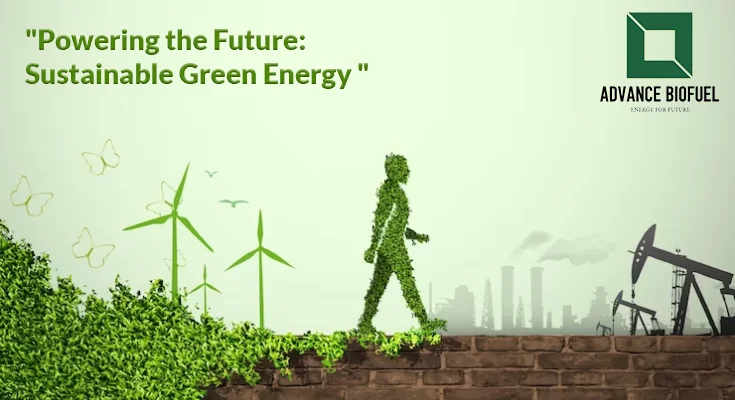Any energy source that cannot run out and is perpetually viable is considered sustainable energy. A sustainable green energy solution serves our need for energy without any threat of going bad or running out; it does not require renewal or replenishment. In addition, renewable energy doesn’t worsen climate change, hurt the environment, or even pose a significant risk to it. Energy sources themselves are often free, but developing and constructing methods to capture them does have a cost.
The Benefits of Renewable Energy Sources for a Cleaner Tomorrow
- Generating electricity that uses fossil fuels sparingly, cuts some forms of air pollution, and emits no greenhouse gases
- Lowering reliance on imported fuels and diversifying the energy supply
- Fostering economic growth and employment in industries like biofuel plant manufacturer, installation, and more
We’ll have cleaner air and better soil if we reduce greenhouse emissions and other pollutants by employing green energy solution. People will live happier lives as a result of this, which will undoubtedly benefit public health. Healthier people will also result in a large decrease in the annual health expenditure that households and governments should set aside.
Innovations in Green Energy Technology: Pushing the Boundaries
The green energy solution is experiencing a significant upsurge in new technologies and innovations, which is lowering costs and raising efficiency. These trash-powered aircraft are driven by biodiesel production plant, fuel ethanol plant manufacturer, fuels generated from waste materials like wood and household waste that react with catalytic chemicals.
Like solar energy, tidal energy is a reliable energy source. Because it is difficult to transfer energy from the ocean to land, scientists have previously had difficulty using this. As a direct energy source, tidal energy can now power up to 20% of the UK.
The Role of Government and the Private Sector in Green Energy Investment
The Ministry’s overarching goal is to determine and put into practice innovative and renewable energy sources in order to meet the growing energy demands of the country. On the other hand, the private sector is investing in green energy solution Technology Benchmarking and Mapping, Determining the areas of essential oil plant manufacturers for research, design, development, and manufacturing and facilitating them.
The National Electricity Plan [NEP] created by the Ministry of Power (MoP) has a 10-year detailed action plan with the goal of supplying electricity throughout the nation. It has also created a second plan to guarantee that power is supplied to the citizens effectively and at a fair price. India ranks fourth in the world in terms of carbon emissions, after China (26.83%), the USA (14.36%), and the EU (9.66%), according to the World Resource Institute Report 2017. India accounts for about 6.65% of all global carbon emissions.
Overcoming Barriers to Widespread Adoption of Green Energy Solutions
Only a modest portion of the green energy solution is produced from renewable sources, particularly in developing nations, despite impressive promotion and commitment from various nations. This situation arises as a result of the numerous obstacles that restrict the spread of renewable energy. These obstacles make it difficult to achieve the requisite large-scale deployment of renewable energy and prevent it from effectively competing with traditional energy.
Conclusion
Conventional power generation that employs exhaustible fuels (oil, coal, and gas) is typically thought to be unsustainable over the long term due to growing knowledge of environmental damage. The long-standing sustainability issue may be resolved by using alternative green energy solution energies that are environmentally friendly and unrenewable, like renewable energy.


